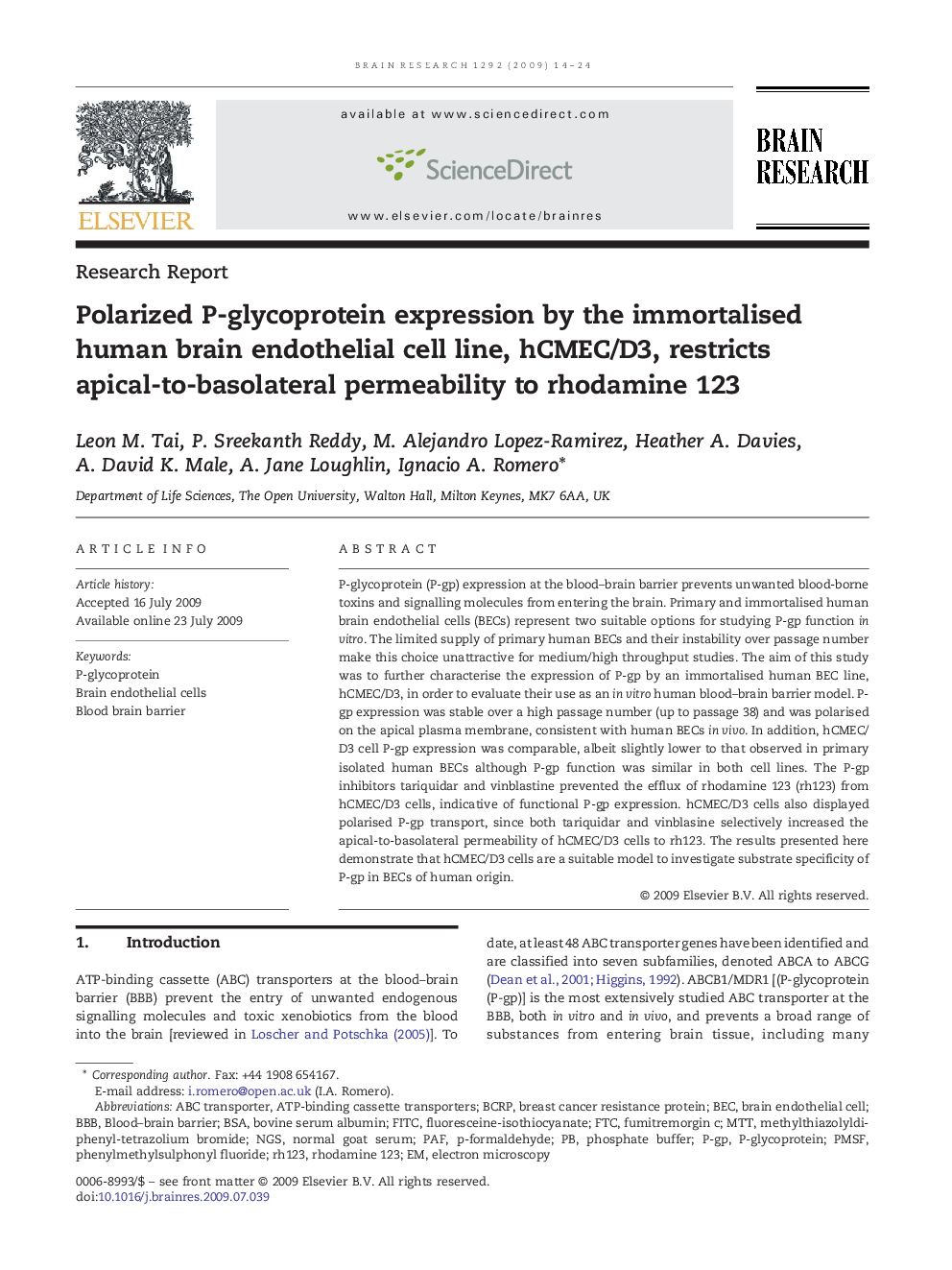| Article ID | Journal | Published Year | Pages | File Type |
|---|---|---|---|---|
| 6265568 | Brain Research | 2009 | 11 Pages |
Abstract
P-glycoprotein (P-gp) expression at the blood-brain barrier prevents unwanted blood-borne toxins and signalling molecules from entering the brain. Primary and immortalised human brain endothelial cells (BECs) represent two suitable options for studying P-gp function in vitro. The limited supply of primary human BECs and their instability over passage number make this choice unattractive for medium/high throughput studies. The aim of this study was to further characterise the expression of P-gp by an immortalised human BEC line, hCMEC/D3, in order to evaluate their use as an in vitro human blood-brain barrier model. P-gp expression was stable over a high passage number (up to passage 38) and was polarised on the apical plasma membrane, consistent with human BECs in vivo. In addition, hCMEC/D3 cell P-gp expression was comparable, albeit slightly lower to that observed in primary isolated human BECs although P-gp function was similar in both cell lines. The P-gp inhibitors tariquidar and vinblastine prevented the efflux of rhodamine 123 (rh123) from hCMEC/D3 cells, indicative of functional P-gp expression. hCMEC/D3 cells also displayed polarised P-gp transport, since both tariquidar and vinblasine selectively increased the apical-to-basolateral permeability of hCMEC/D3 cells to rh123. The results presented here demonstrate that hCMEC/D3 cells are a suitable model to investigate substrate specificity of P-gp in BECs of human origin.
Keywords
Related Topics
Life Sciences
Neuroscience
Neuroscience (General)
Authors
Leon M. Tai, P. Sreekanth Reddy, M. Alejandro Lopez-Ramirez, Heather A. Davies, A. David K. Male, A. Jane Loughlin, Ignacio A. Romero,
